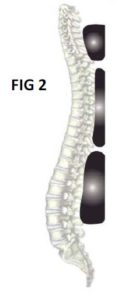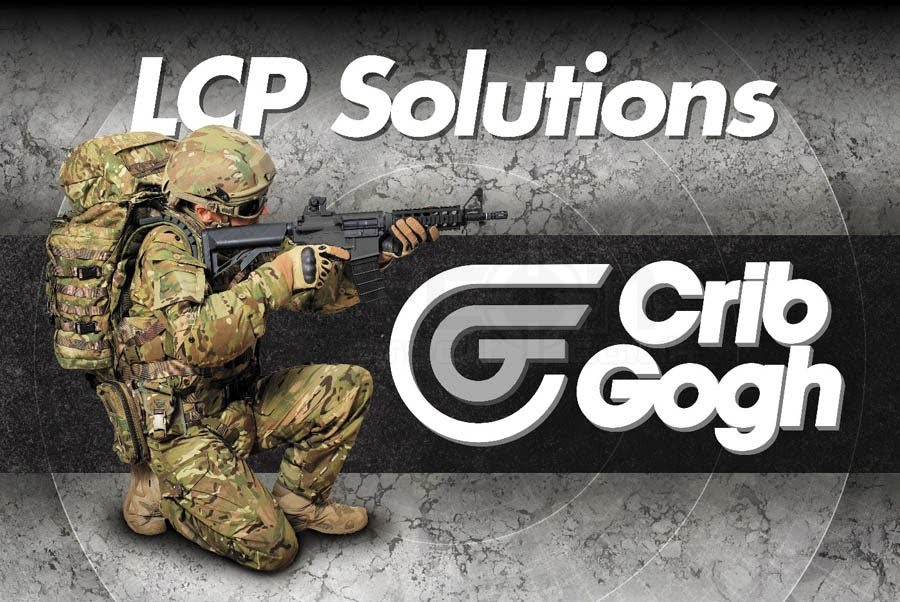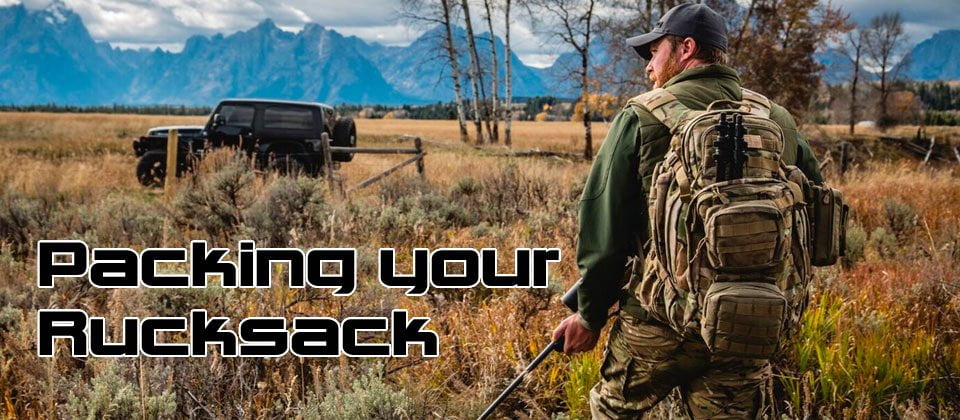Before you pack your rucksack for your expedition you first need to make sure that your rucksack is the right one for the job and then that it fits you correctly.
Check out our range of Crib Gogh products here. Crib Gogh – For The Ultimate Equipment to Survive the Extremities the World has to Offer

Measuring a person for their rucksack
 To allow the full articulation of the neck between C1 and C7 you have to locate the Spinous process of the C7 vertebrae. This is the most prominent knobble at the base of your neck just above the level of your shoulders. Then find the iliac crests of your pelvis. You do this by standing with your hands on your waist then sliding your hands down until you find the top of your pelvis. Project a horizontal line from here to your spine. Measure the distance of these two points using the flexible tape measure and your assistant. See fig 1. This measurement will allow you to determine the back size required of the rucksack that you wish to purchase.
To allow the full articulation of the neck between C1 and C7 you have to locate the Spinous process of the C7 vertebrae. This is the most prominent knobble at the base of your neck just above the level of your shoulders. Then find the iliac crests of your pelvis. You do this by standing with your hands on your waist then sliding your hands down until you find the top of your pelvis. Project a horizontal line from here to your spine. Measure the distance of these two points using the flexible tape measure and your assistant. See fig 1. This measurement will allow you to determine the back size required of the rucksack that you wish to purchase.
 Matching the exact back length will only happen if you have an external frame with an adjustable back system. On fixed back sizes you have an average back length that will give you a margin of error of 6cm either end. Once you have the rucksack you then have to fit to you.
Matching the exact back length will only happen if you have an external frame with an adjustable back system. On fixed back sizes you have an average back length that will give you a margin of error of 6cm either end. Once you have the rucksack you then have to fit to you.
Fig 2 shows Crib Gogh’s patented back system that spreads the weight to the correct points of the spine maximising comfort and allowing the wearer to move both diagonally and laterally without restricting natural spinal movement.
Weight Distribution
Packing your rucksack will become a personal thing that with time you will add your own idiosyncrasies. This will become very important as there will be times when it is dark or with little light and you will need to know where that certain piece of kit is and access it quickly.
Most three day plus expeditions a top loader rucksack with a split main compartment with lower front access is usually the design of choice. Once your rucksack is purchased you then have to manage your load between comfort and balance. As a rule of thumb if you take your belly button as the bodies central focal point. There are debates for the heavier items to be stacked high and low but the reality is you have match weight with balance, comfort and the long term stamina of your trip.
The heaviest items should be packed so that they are in line or marginally above the body’s belly button with the medium weight items above. This will then give a more predictable and comfortable centre of gravity. If the weight is too high you will feel the rucksack trying to tip you over and if it is too low it will feel saggy, and both will sap your energy much quicker over rough and awkward terrains.
The lower section of your rucksack is usually filled with the items that you will not need until last thing at night. This is usually your sleeping bag, night wear and the next day’s clothing requirement. A personal idiosyncrasy of mine is to roll my clothing up before I stow it and then I pack it around the heavier items to reduce sway. This is significantly important as the more your pack sways the more energy you use to compensate for it when on the move.
On a recent bio-mechanical trial the Crib Gogh Constrictor rucksack was the heaviest tested in the group, as it had more compression straps and padding than the rest of the rucksacks on the trial and it came “First” by over 30%. It was proven that despite the extra weight the users had used less oxygen had a lower heart rate and a higher comfort level than the other rucksacks on the test due to the fact that the load was more securely packed.
Stow your frequently used items within easy reach in the lid pocket which would include your map, compass, sunscreen, eye wear, torch, insect repellent, toilet paper, snacks and your first aid kit. Some of this kit can attached to the accessory points on Crib Gogh shoulder straps or in the hip belt pockets for even quicker access. If your rucksack has the rain cover in the lid make sure not to obstruct it when packing the sack lid. It is also worth investing in a good waterproof poncho, if the weather really turns they are a really useful piece of kit to have to carry on with your expedition.
If you are carrying camping fuels make sure that this is stowed securely with the lid firmly tightened and that it is below any food that you are carrying in case of leakage. When packing your utensils do not waste the empty space that they have, fill them with other items such as items of clothing or soup packets etc.
Walking poles should be lashed on with the pole and axe loops and stays, many people advise that you stow them against the side compression straps. When stowing kit against the compression straps make sure that you keep the weight symmetrical as this affect the balance of your rucksack and sap your energy. If you carrying a personal tent that it should be packed with the lash points on the underside of the rucksack with the poles symmetrically stowed against the side compression straps using the base wand pockets.
Do not pack the tent inside the rucksack unless it has its own waterproof cover as this will contaminate the rest of the pack if it is wet and you pick up insects when pitched. The last thing you need early on in your expedition is to have your food source contaminated. A good rucksack will have lash pints and all Crib Gogh rucksacks have them so use them. The ground sheet should be stowed outside on the lid lash points.
If you carrying parts of a communal tent the same rules apply, make sure that if you cannot attach it to the lash points and you have to put it in to the main compartment make sure that you have a waterproof cover over the tent items to prevent contamination.
Waterproofing:
My personal favourite is to have a canoe sack; they are well proven tough and work extremely well. If packed right and used on a water crossing they will add to the buoyancy of the rucksack and are a really useful accessory to have. When using one make sure that at night you vent it and you keep your damp items separate as they will smell if stowed in the canoe sack. I have a small one for the lower compartment and a larger one for the top compartment that will extend with the sack mouth.
Crib Gogh expedition bags have a front pocket for your damp kit to keep it separate whilst on the move,
remember that wet kit weighs more and will sap your energy.
On longer hikes and expeditions a water purifier would a sound investment and your bladder will need a
cleaning kit and should be part of your utensil requirement.

Rucksack shown is the Crib Gogh MDP120 in Military format and is available in Black/Yellow, Black/Blue and Black/Black.

The above image is seen as a guide and is down to the individual idiosyncrasies of the user and when you
find what works for you stick to it. Packing a rucksack is a very personal thing. Always organise and
research your trip and be prepared.
Choosing the right rucksack for the task ahead
To accommodate a variety of activities, and environmental conditions, Crib Gogh offers a range of designs and sizes to suit both you and your required needs. This allows you the user to choose the correct size and the most comfortable pack available.
Day sacks (35L): All of our sacks have an internal frame to support any load and our unique patented back system to maximise comfort and cooling on the move, the cargo weight is supported by the shoulder straps. Day sacks are great for short, minimal equipment outings like day hikes and every day use to and from work or the office.
Alpine Sacks (35 – 55L): All of our sacks have an internal frame to support any load and our unique patented back system to maximise comfort and cooling on the move. The load capacity makes them useful for equipment intensive activities like skiing, touring and climbing, or even light overnight jaunts.
Trekking Packs (55 – 75L): This size is designed for multi day hiking trips. These are fitted with an adjustable back system that is patented with unique weight distribution and cooling.
Expedition Rucksacks (75 – 120L): The very large capacity of these rucksacks makes them ideal for extended hiking/trekking trips and full expeditions. We have tested ours on the top of the world with a North Pole expedition and the bottom with the British Antarctic Survey teams. These are also very useful on winter trips that require extra gear.
This guide should give you some idea of the size of rucksack required per trip duration.
5 nights or more
Summer 65-80ltrs
Spring/Autumn 80-90ltrs
Winter 80-90ltrs
3-5 nights
Summer 50-65ltrs
Spring/Autumn 65-80ltrs
Winter 80-90ltrs
1-2 nights
Summer 35-50ltrs
Spring/Autumn 40-50ltrs
Winter 55-70ltrs
Day trips
Summer 25-35ltrs
Spring/Autumn 35-40ltrs
Winter 35-50ltrs
Remember these tips
Pack light! Every ounce matters when you’re covering lots of ground and elevation.
Pack the heavy stuff against your back in the middle of the pack.
Prepare for the worst possible weather, even if it’s not in the forecast
Bring plenty of water or better yet, a packable water filtration system that removes parasites like Guardia
Remember extra batteries for your headlamp, flashlight and GPS
Have a good map and compass, and know how to use them. Plan ahead and be prepared
Dispose of waste properly
Leave what you find
Minimise campfire impacts
Respect the wildlife
As a professional courtesy let the local mountain rescue teams know you are there and your route
If you are going far in to the wilderness hire a satellite phone:
Note: not all satellite phones are global we would recommend Iridium
Disclaimer
Crib Gogh Ltd has been meticulous in the design of all of our rucksacks and even though both of our patented back systems are designed to distribute the weight to maximise both comfort and cooling it will offer some limited protection to the spine in a fall, but this is in no way a given guarantee of no injury. We stack up from the floor up. Spine problems are predisposed by instability in the pelvis caused by skeletal misalignments in the lower limbs. Excessive or incorrect foot contact in rough terrain can cause forceful foot roll and leg rotation when walking or running causing the pelvis to twist forcefully. The pelvis is the foundation of the spine and constant movement causes instability to the spine with rotation and slippage causing nerve impingement and wear. The rucksacks that Crib Gogh manufacture are to the highest standards available and all the add-ons and unique design features will make the task of transporting weight across difficult terrain more comfortable, it will not safe-guard the spine against damage from that terrain or from incorrect loading and posture
The information on this page is written to help you avoid injury. There are many possible causes for back pain and should you have any concerns you should always seek advice from a qualified health professional such as a Chartered Physiotherapist or your GP.
Check out our range of Crib Gogh products here. Crib Gogh – For The Ultimate Equipment to Survive the Extremities the World has to Offer

Written by S.R. Heaword of Crib Gogh Ltd










